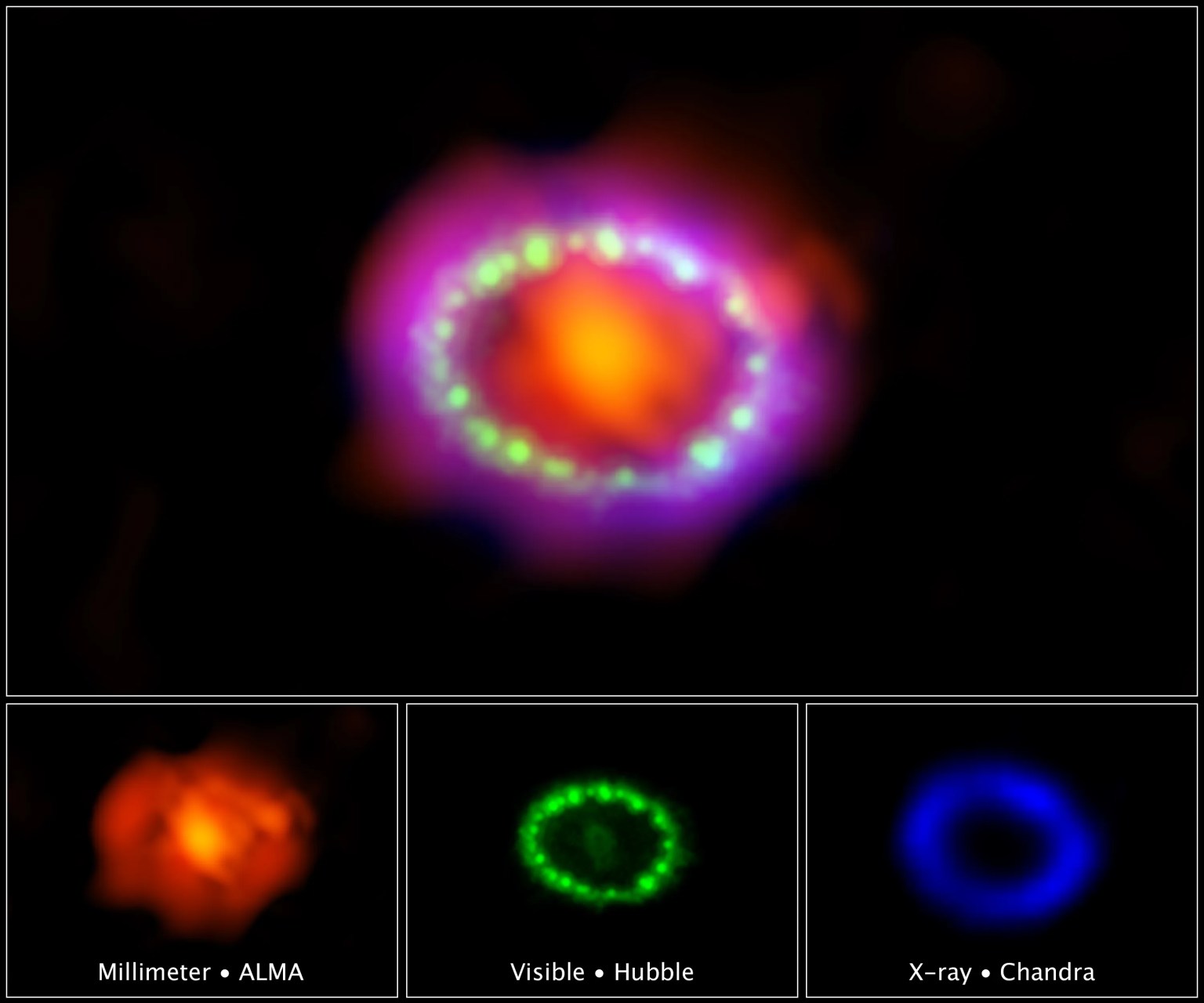In a groundbreaking discovery, astronomers utilizing NASA's James Webb Space Telescope (JWST) have unearthed compelling evidence indicating the presence of a neutron star within the remnants of Supernova 1987A, marking a significant advancement in astrophysical exploration.
Supernova 1987A, which illuminated the night sky on February 23, 1987, provided astronomers with an exceptional opportunity to scrutinize the explosion of a massive star in unprecedented detail. Now, nearly four decades later, recent observations from JWST offer intriguing insights into the aftermath of this historic event.
The findings detailed in a publication in the journal Science, reveal indirect indications of a potent source of X-rays emanating from the core of the supernova remnant. Examination of infrared emissions captured by JWST suggests the presence of ionized argon and sulfur in the central region of the remnant, hinting at the existence of a high-energy source.
Astronomers postulate that the detected X-rays may originate from a neutron star, a dense remnant left behind by the supernova explosion. Neutron stars, characterized by intense magnetism, emit powerful radiation beams, making them plausible sources of the observed X-rays. Alternatively, the X-rays could stem from an ordinary neutron star with an exceedingly high surface temperature owing to its recent formation.

(image credit @NASA_Hubble_Mission_Team)
"This constitutes some of the most compelling indirect evidence indicating the presence of a neutron star," remarked Aravind Pazhayath Ravi, an astrophysicist at the University of California, Davis, who was not involved in the research. While not a direct detection, these findings complement previous data and propel our comprehension of the aftermath of Supernova 1987A.
The discovery carries profound implications for astrophysics, providing researchers with a rare opportunity to investigate a neutron star shortly after its inception. Direct observation of the neutron star could furnish invaluable insights into its internal structure and behavior, unraveling the enigmas surrounding these exotic cosmic entities.
Looking ahead, scientists anticipate that the surrounding dust clouds will continue to dissipate over the next decade, potentially facilitating direct imaging of the neutron star. This could afford astronomers unprecedented views of one of the youngest neutron stars ever documented, heralding further breakthroughs in our understanding of the cosmos.
Supernova 1987A remains a source of fascination for scientists and enthusiasts alike, serving as a reservoir of discoveries that deepen our comprehension of the universe. With each new revelation, the legacy of this extraordinary stellar explosion expands, offering fresh perspectives on the mysteries of the cosmos.
Photo credit: NASA/ ESA/ CA
Edited by: Jaya Jha

